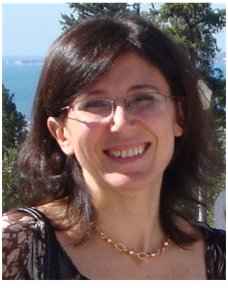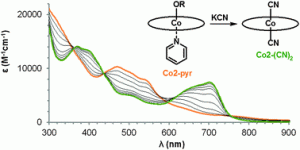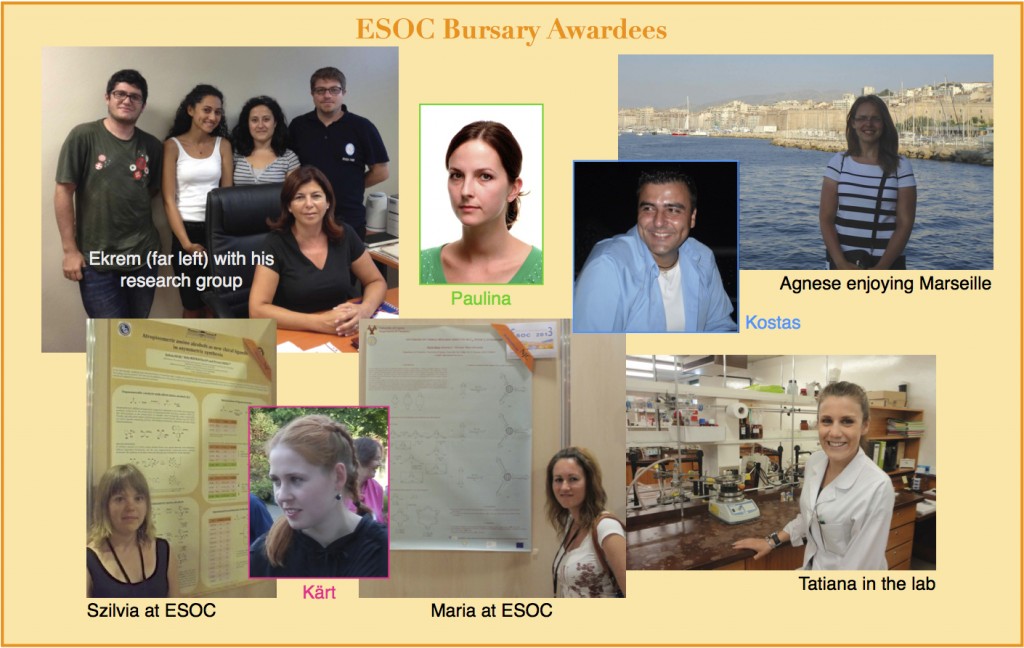We are pleased to present a selection of our authors of the October issue of NJC. We thank each of them for accepting our invitation and having kindly taken some of their time to answer a few questions for us.
 Our first author is Fatima C. Teixeira who is a Researcher at the Laboratorio Nacional de Energia e Geologia in Lisboa (Portugal). Her current research interests are in the field of organic chemistry, especially in the synthesis and characterization of heterocyclic compounds containing phosphonate groups. Currently, her research is focused on the preparation of precursors for new materials for proton exchange membranes with high conductivity for fuel cells. In her NJC paper, Fatima and co-workers report on a new strategy for the synthesis of new diphosphonated azaheterocyclic compounds to become precursors for novel membrane materials for fuel cells. Also, the NMR analysis shows, for a benzimidazole derivative, the presence of only one or both tautomeric forms on the NMR timescale, depending on the solvent and concentration of the solution.
Our first author is Fatima C. Teixeira who is a Researcher at the Laboratorio Nacional de Energia e Geologia in Lisboa (Portugal). Her current research interests are in the field of organic chemistry, especially in the synthesis and characterization of heterocyclic compounds containing phosphonate groups. Currently, her research is focused on the preparation of precursors for new materials for proton exchange membranes with high conductivity for fuel cells. In her NJC paper, Fatima and co-workers report on a new strategy for the synthesis of new diphosphonated azaheterocyclic compounds to become precursors for novel membrane materials for fuel cells. Also, the NMR analysis shows, for a benzimidazole derivative, the presence of only one or both tautomeric forms on the NMR timescale, depending on the solvent and concentration of the solution.
When asked what led to the publication of this article at NJC, Fatima responds: “We choose NJC due to its multidisciplinarity, with a broad and diverse readership, fast publishing time and high quality”.
Out of the lab, Fatima likes to spend time with her family, going to cinema, swimming, reading or travelling.
If Fatima could not be a scientist, she will probably be an engineer.
New azaheterocyclic aromatic diphosphonates for hybrid materials for fuel cell applications by Fátima C. Teixeira, C. M. Rangel and António P. S. Teixeira, New J. Chem., 2013,37, 3084-309 DOI: 10.1039/C3NJ00585B.
Our next author is Ricardo Gargano, Professor at the Institute of Physics of the University of Brasilia (Brazil). Ricardo’s research interests focus on electronic structure  calculation and kinetic and dynamic of molecular systems.
calculation and kinetic and dynamic of molecular systems.
In this issue of NJC, Ricardo has authored the article An extensive investigation of reactions involved in the nitrogen trifluoride dissociation by Simone S. Ramalho, Wiliam F. da Cunha, Alessandra F. Albernaz, Pedro H. O. Neto, Geraldo Magela e Silva and Ricardo Gargano, New J. Chem., 2013, 37, 3244-3251 DOI: 10.1039/C3NJ00553D. “The results obtained in our work are of potential use for comparison in future theoretical and experimental works in the NF3 decomposition mechanism”, explains Ricardo who chooses NJC for publication of this article as NJC publishes innovative, original and significant works in Chemistry.
In his free time, Ricardo loves playing soccer and if he was not a scientist, he would like to be a soccer player.
Closing this month’s author selection, Christophe Den Auwer is Professor at the University of Nice Sophia Antipolis in the Institut de Chimie de Nice (France).
 His current research interest is radiochemistry – Actinide chemistry in interaction with biotope and human toxicology
His current research interest is radiochemistry – Actinide chemistry in interaction with biotope and human toxicology
He has authored in this NJC issue the paper Multi-edge X-ray absorption spectroscopy of thorium, neptunium and plutonium hexacyanoferrate compounds by Thomas Dumas, Marie Christine Charbonnel, Iraida A. Charushnikova, Steven D. Conradson, Clara Fillaux, Christoph Hennig, Philippe Moisy, Sébastien Petit, Andreas C. Scheinost, David K. Shuh, Tolek Tyliszczak and Christophe Den Auwer, New J. Chem., 2013,37, 3003-3016 DOI: 10.1039/C3NJ00318C3. “This paper which is part of the PhD thesis of Thomas Dumas describes some fundamental aspects of actinide chemistry. Few years ago when I was at Commissariat à l’Energie Atomique (CEA) we launched this work on actinide hexacynometallates because the cyanometallate chemistry is so rich.” says Christophe.
Out of the lab, Christophe favourite activities are Mountain hiking and back country skiing.
To the question, If you could not be a scientist but could be anything else, what would you be? Christophe answers “It is of course difficult to answer but I would have liked to work in another type of creating occupation because imagination in science or in artistic fields is the most enjoyable part of our work.”
Comments Off on Meet our authors of the October issue of NJC


































